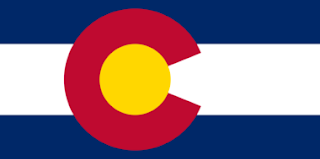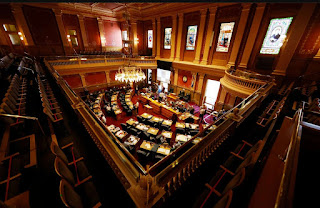The maps released Monday are the first plans drawn by the nonpartisan redistricting staff based on a decade of demographic changes captured in the 2020 Census data.
Sources Cited
The latest draft maps of Colorado’s new state Senate and House districts would make it difficult for Republicans to challenge Democratic control of the legislature, according to analysis of the proposals released Monday.
Under the new maps, the 35-seat state Senate would include 15 safe Democratic districts, 10 safe Republican districts and 10 competitive districts, according to a report by nonpartisan staff. Five of the competitive seats lean toward Democrats, however, meaning it would be difficult for the GOP to take back control of the chamber — their best shot at reversing four years of Democratic control at the Capitol.
The state House, which has 65 seats, would have 33 safe Democratic districts, 21 safe Republican districts and 11 competitive districts under the new maps. Two of the competitive seats lean in Democrats’ favor, making it appear unlikely that the GOP could pick up the 11 seats it needs to take back control in the House.
Colorado has been trending blue for years as the share of registered Republican voters has declined and the percentage of unaffiliated voters grows. Republicans see the redistricting process as an opportunity to regain some ground in the state legislature.
TODAY’S UNDERWRITER
“We agree with the assessment provided by others in the media that this map will consistently elect a Democrat majority in the State House and State Senate,” said Joe Jackson, executive director of the Colorado Republican Party. “This process has a long way to go, and we hope the commission will work to generate more competitive districts.”
Alan Philp, a lobbyist representing a Republican-oriented Colorado Neighborhood Coalition, agreed.
“The maps are an improvement over the 2011 maps politically in terms of the number of competitive districts, but there’s plenty of room for improvement,” said Philp.
The Colorado Democratic Party Monday raised concerns that the draft Senate map would give Republicans an “unfair advantage,” citing districts where Democratic incumbents who are up for election in 2022 are placed in the same district as Republican incumbents who face re-election in 2024.
“For the sake of fairness, the commission staff needs to understand the implications of drawing maps without taking into account the overlapping 4-year terms of state senators. Coloradans voted for fair redistricting when they approved Amendment Z, and this map does not meet that goal,” said David Pourshoushtari, a spokesman for the Colorado Democratic Party.
“It’s not about the incumbents necessarily — it’s about how the seats are staggered,” Pourshoushtari said, adding that “going into 2022, that’s three seats right there that could give Republicans … three seats to earn a state Senate majority.”
The maps released Monday are the first plans drawn by nonpartisan redistricting staff based on a decade of demographic changes captured in 2020 census data. They also take into account input from more than two dozen public hearings held around the state, and include parameters requested by members of the Independent Legislative Redistricting Commission.
The commission, formed by the passage of Amendments Y and Z in 2018, has until Oct. 11 to finalize the maps and must submit them to the Colorado Supreme Court by Oct. 15.
The legislative commission has a policy defining political competitiveness based on an average of election results from eight statewide races between 2016 and 2020. The metric looks at the difference between the percentage of votes cast for a Republican candidate versus the percentage of votes cast for a Democratic candidate.
Nonpartisan staff consider a district competitive if neither party has an advantage of more than 8.5 percentage points. The Colorado Sun considers a district leaning in favor of a political party if it has an advantage of at least 5 percentage points.
While candidates for the U.S. House don’t need to live in the district they represent, candidates for the state legislature do. That means changes to the districts could leave some incumbents and candidates out of the running unless they’re willing to move or challenge a colleague, potentially in a primary.
At least 14 incumbents in the state Senate would be in the same district as another senator, according to a Colorado Sun analysis of the proposed Senate map. And at least 16 incumbents in the state House would be drawn into the same district as another representative.
The districts will continue to change.
Nonpartisan staffers are slated to draw another iteration of both House and Senate maps by Sept. 23. How much the maps change will depend on the input the commission receives at public hearings this Friday and Saturday, as well as any new parameters adopted by the 12-member commission.
Commissioners will receive a presentation and discuss the latest proposed maps at a meeting at noon Tuesday


Comments
Post a Comment